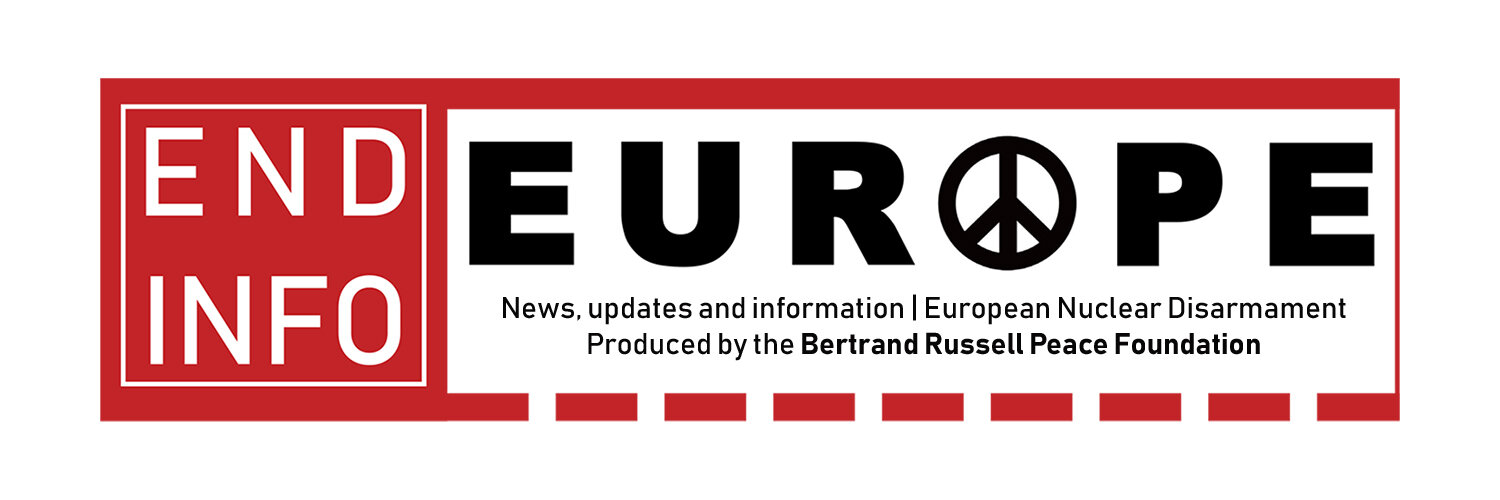Covid-19 & Nuclear Dangers
There is only one place to start when discussing global threats: the current Covid-19 pandemic. The scale and magnitude of the pandemic, and the way in which governments across the world have been exposed as ill-prepared and in some cases unwilling to respond quickly to preserve human life has been widely covered. The cases of the United States and United Kingdom governments stand out as particularly appalling. How does the pandemic link to the other pressing danger with which END Info concerns itself?
On Thursday 30 April, President Trump claimed the following: “We’re going to see where it [Covid-19] comes from ... We have people looking at it very, very strongly. Scientific people, intelligence people, and others. We’re going to put it all together. I think we will have a very good answer eventually. And China might even tell us.” What was Mr Trump talking about? It’s sometimes difficult to know, but not this time.
Trump claims to have seen evidence that Covid-19 originated at the Wuhan Institute of Virology, in the Chinese province where the outbreak emerged. Despite the absence of public, verifiable evidence and a great degree of caution on the part of US intelligence agencies, Trump’s claims were repeated by US Secretary of State, Mike Pompeo, on television news. Pompeo told ABC news that:
“There is enormous evidence that that’s where this began ... I can tell you that there’s a significant amount of evidence that this thing came from a laboratory in Wuhan.”
What’s going on here? What are Trump and Pompeo attempting to do by pointing the finger of blame at China? Part of what’s going on is that the Trump administration is making China into a scapegoat to cover for its own mishandling, and patent inability to handle, the pandemic. Every reactionary government looks for someone or something to blame other than itself. Neither Trump nor Pompeo care that their repeated attacks on China have resulted in an increase in racist assaults against Chinese people in the West.
This is because they are pursuing a deliberately racist policy. But scapegoating China for the Pandemic is only part of the story. In mid-April, as the Pandemic was in full development, the US State Department claimed that China ‘may have’ secretly conducted a low-yield underground nuclear test. No conclusive proof was offered for this claim, only satellite photographs that suggested some earthworks at a dormant test site.
In response, China has robustly rejected the claims and has warned of the dangers associated with making them. Both the US and China signed the Comprehensive Test Ban Treaty in 1996, but neither of them have ratified it. As such, the US and China are not bound by Treaty on this question. However, China’s policy is committed to adhering to the CTBT and the US has been observing a moratorium on testing. Despite neither nuclear armed state being a signatory, there is a mass of international pressure to adhere to the provisions.
There would undoubtedly be a major public outcry if any of the ‘core’ nuclear armed states conducted a nuclear test. If we quickly examine the Trump administrations attitude to other international nuclear treaties and agreements, we will see a clear direction of travel. He sabotaged the Intermediate-range Nuclear Forces Treaty (NPT), withdrew from the Iran Deal and looks likely to scupper attempts to renew New START, which limits numbers of nuclear warheads.
END Info and others have argued that Trump has engaged in a systematic sabotage of such treaties and agreements: a ‘Bonfire of Treaties’. Why, then, is the US behaving in this way? For much of the 1990s and 2000s, the US was the predominant global power. The repeated wars and military interventions carried out by the US alone, under the auspices of NATO or with a ‘coalition of the willing’ were designed to secure US economic and political power on a world scale. There was ‘one pole’ of global power in the world and, unchecked, it ran amok. The situation is no longer the same. The world has moved from a unipolar to a multipolar order. The failure of US strategy in Iraq and the wider Middle-East, combined with the economic shocks of 2008, stripped the US of its sole superpower status but its military strength remains considerably greater than other states.
Substantial economic growth in China meant that it was able to assist to avert the worst consequences of the 2008 crash and has built economic, diplomatic and developmental relationships across the world. The US is aggressively asserting itself in an attempt to preserve influence and to ‘remake’ what it can of the old order. This is a very dangerous strategy. It is especially dangerous given the complex mix of technological development, global economic shifts and international political developments.
The US has forged a ‘global tinderbox’ where one mistake, one misapprehension, one error, could engulf the world in violence. This is why Trump’s claims about China and the Pandemic are not only deeply racist, but incredibly dangerous. Is the US preparing to use its false claims about China testing nuclear warheads as a pretext for staging tests of its own? Will Trump’s ever-hardening line against China simply accelerate the destruction of Treaties and agreements? It seems likely. How will Trump’s anti-China stance play out in NATO member states, like the UK for example, which are seeking to sign trade deals and other such agreements? It seems likely that Trump will seek to pull them closer to the US than is already the case.
Whilst Trump and company threaten China, the peace movements must resist the threats and seek to learn as much as we can about that country.

